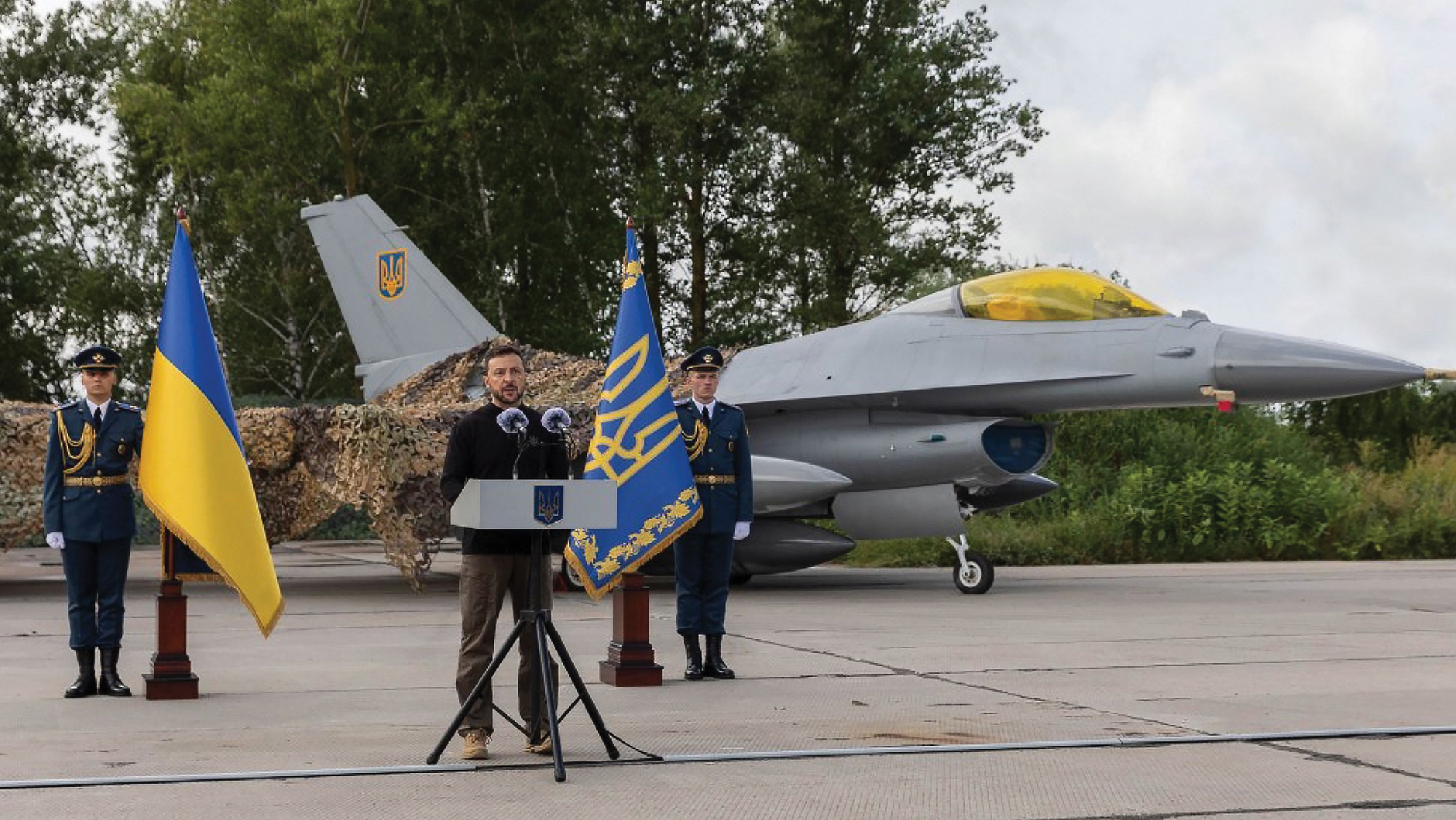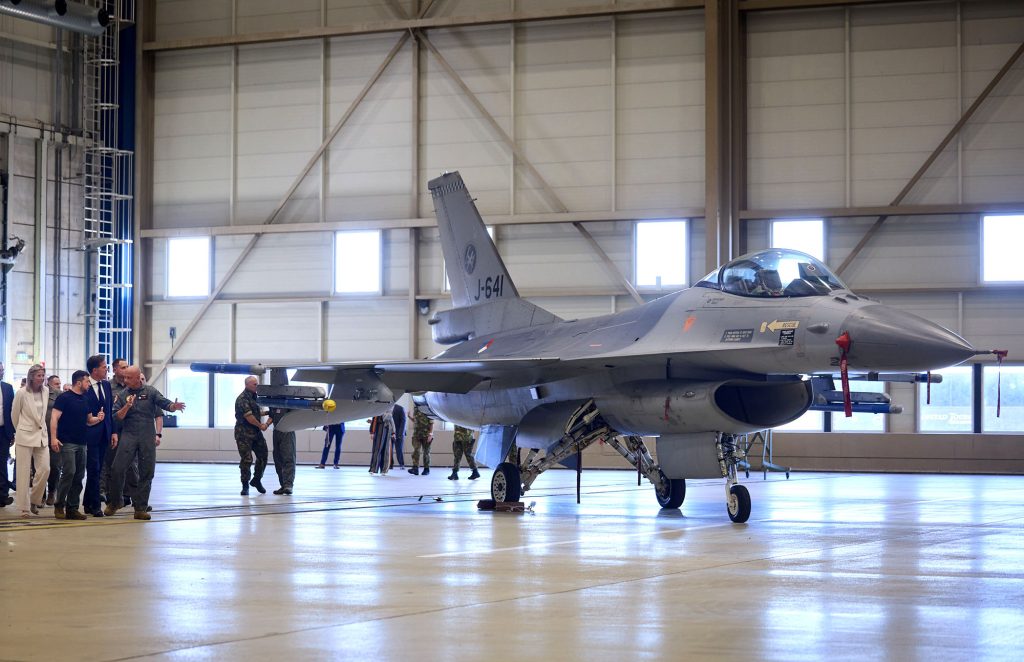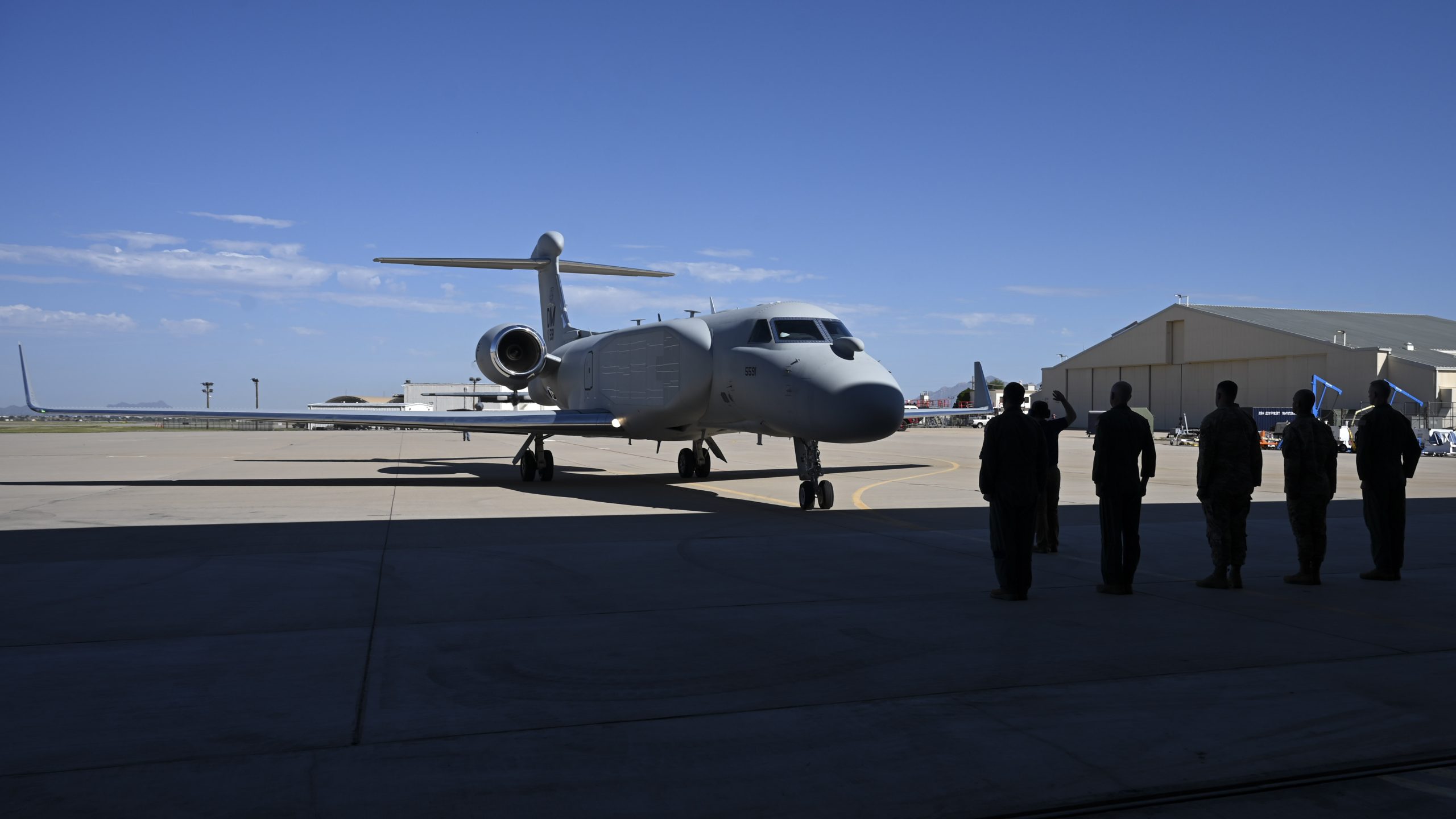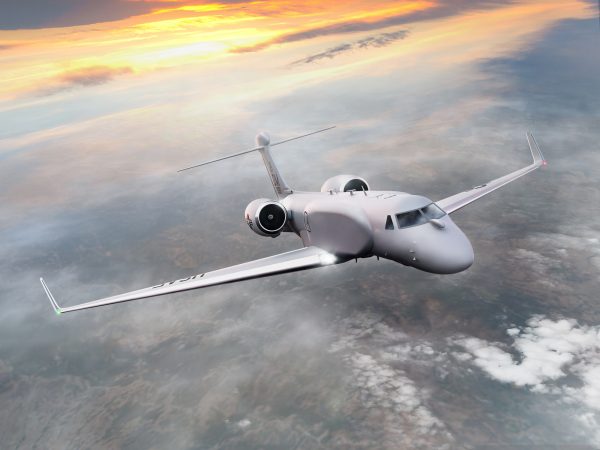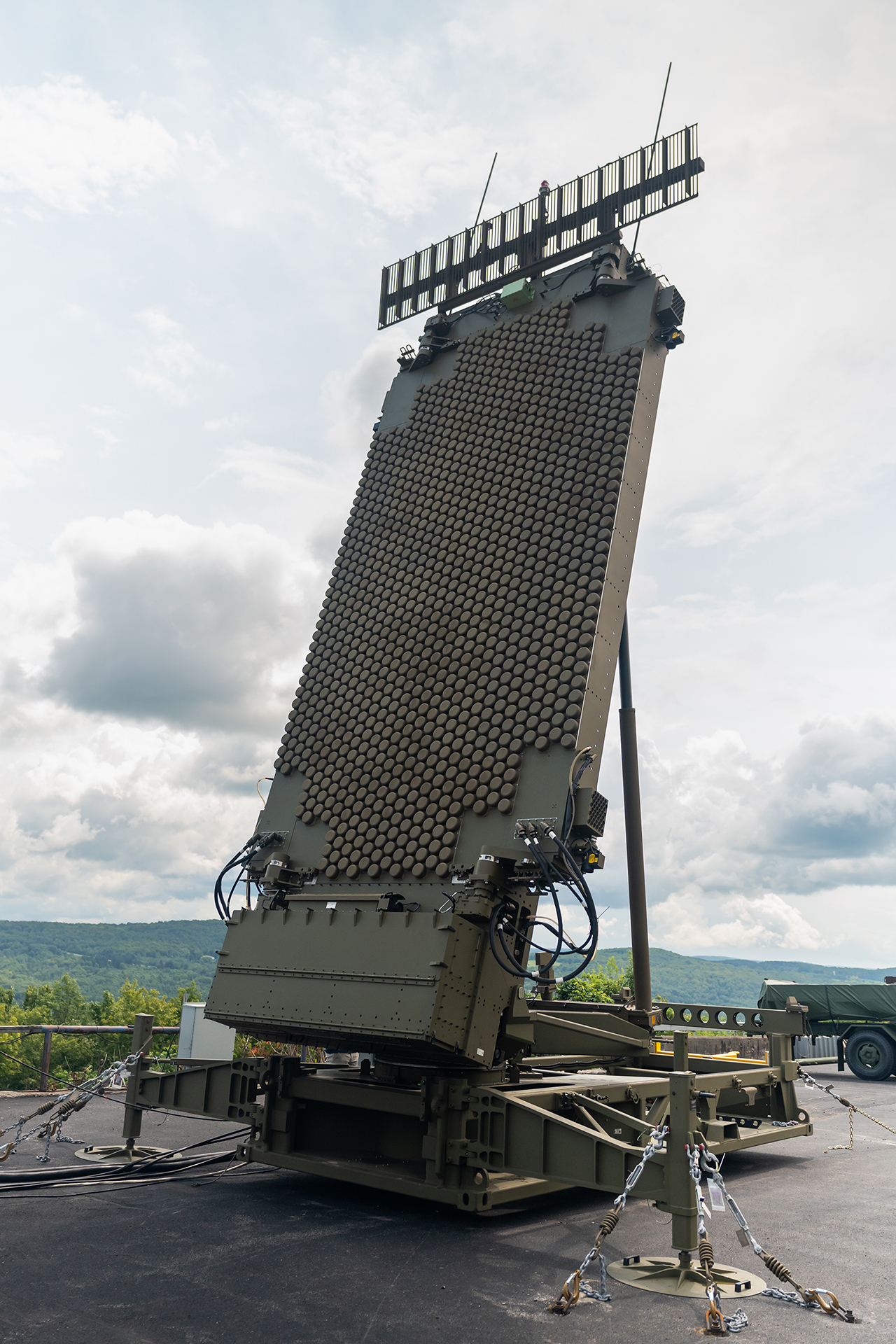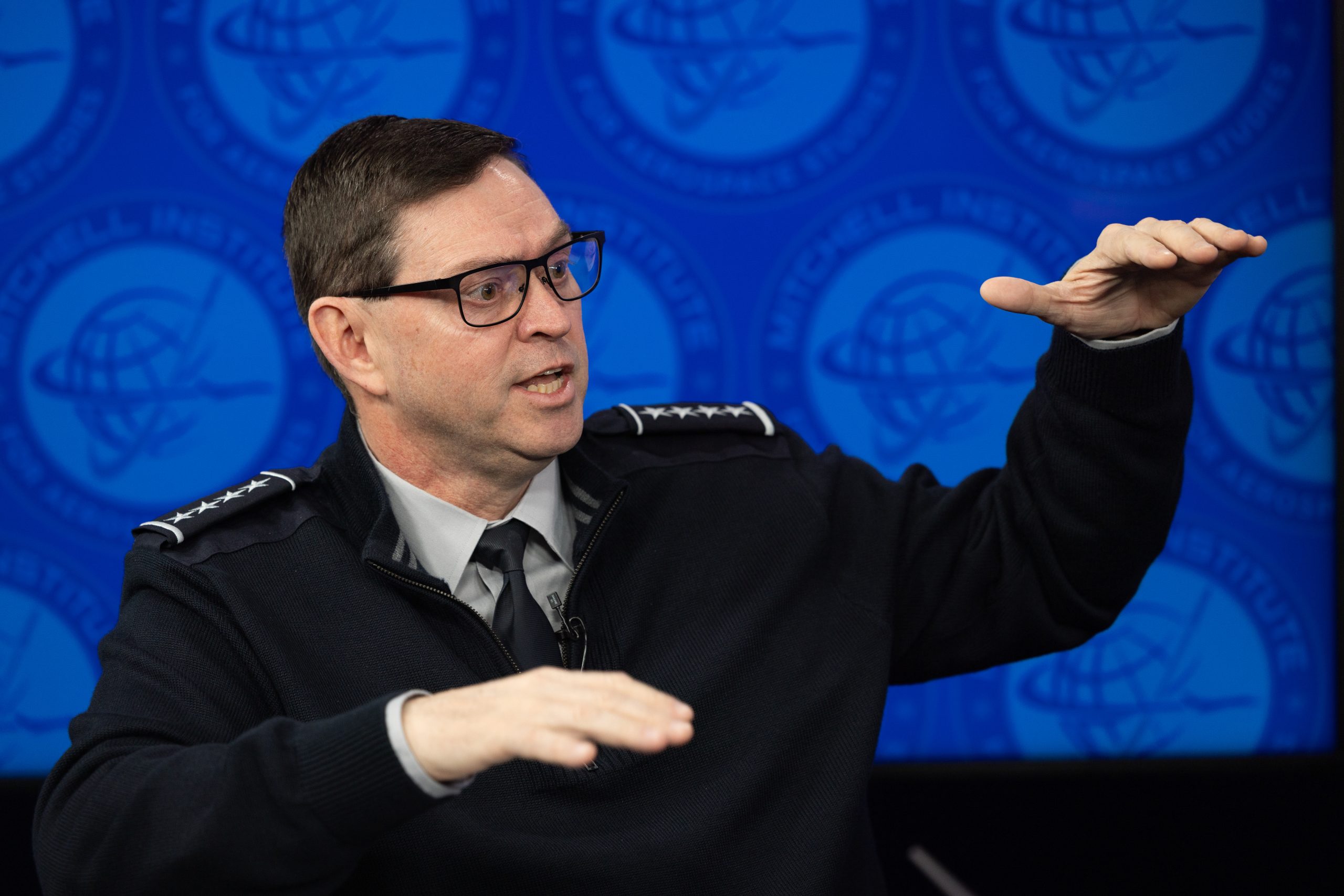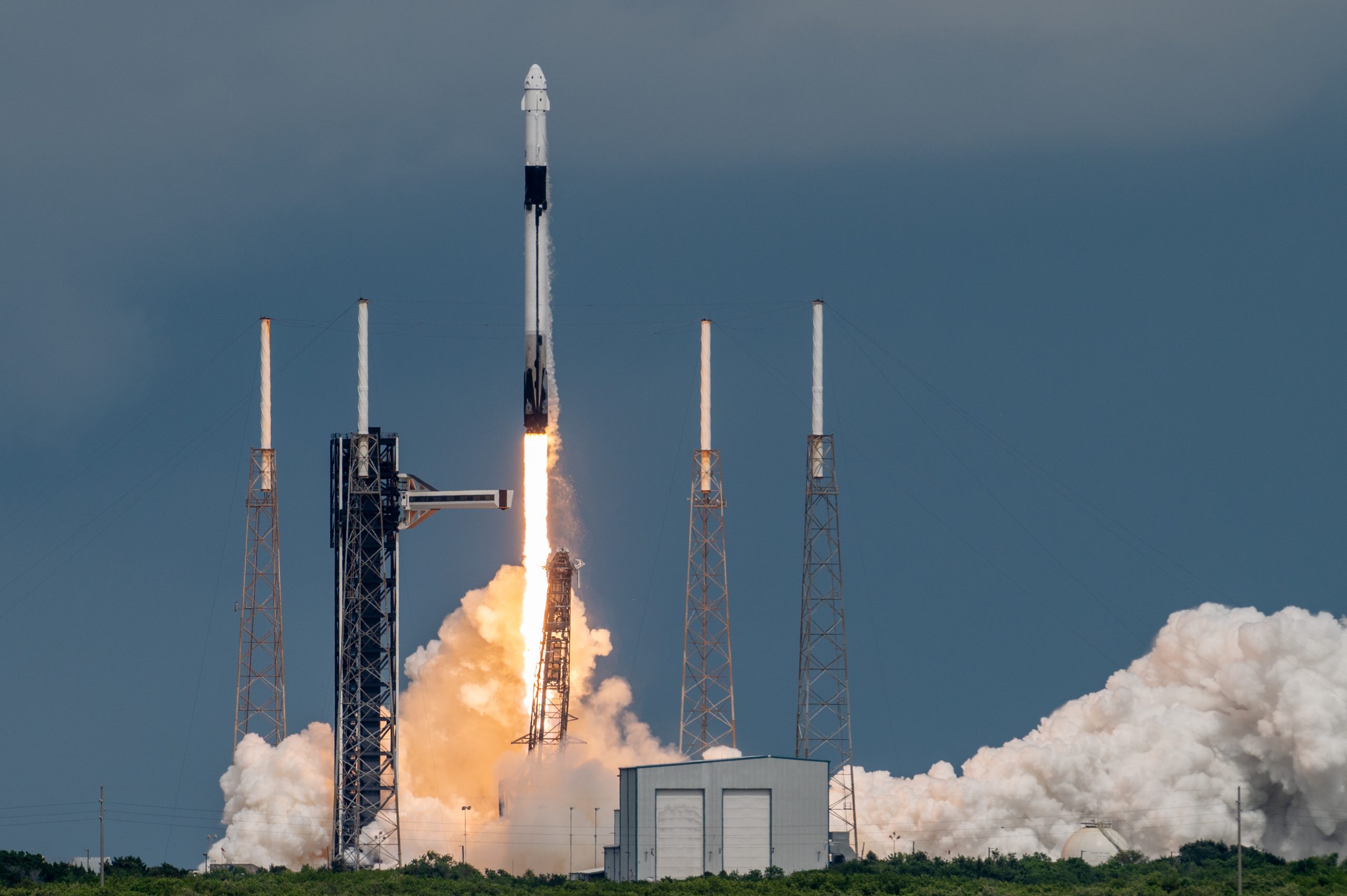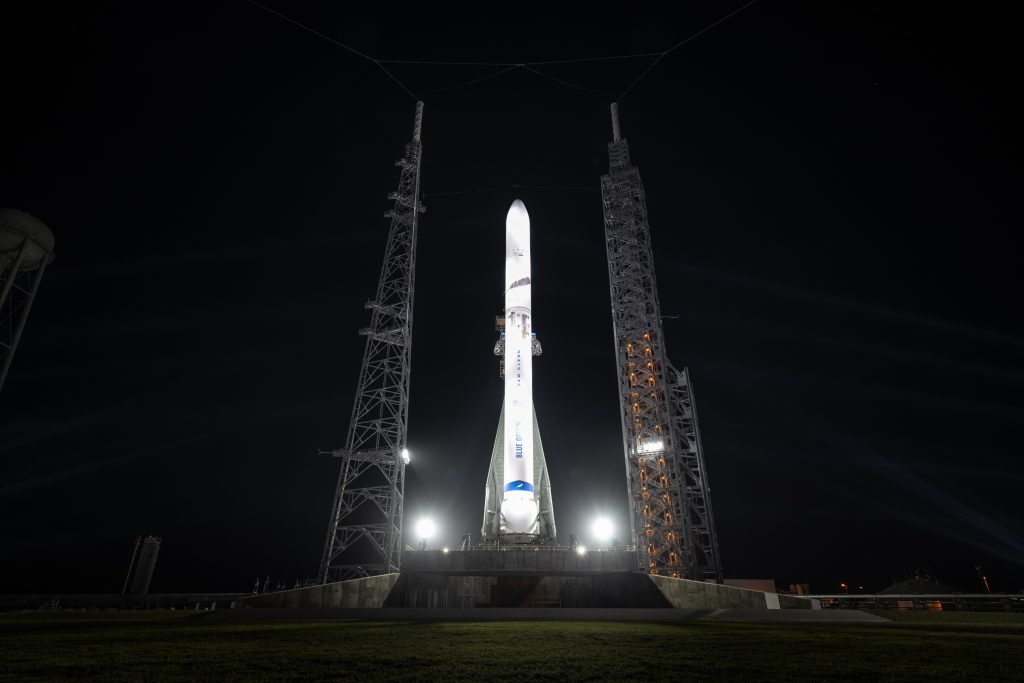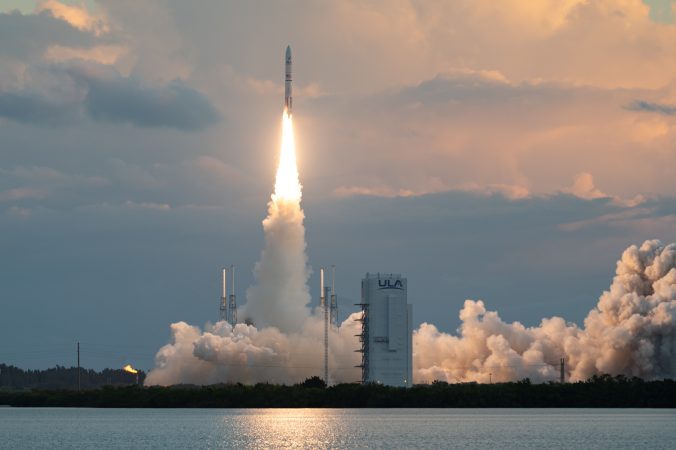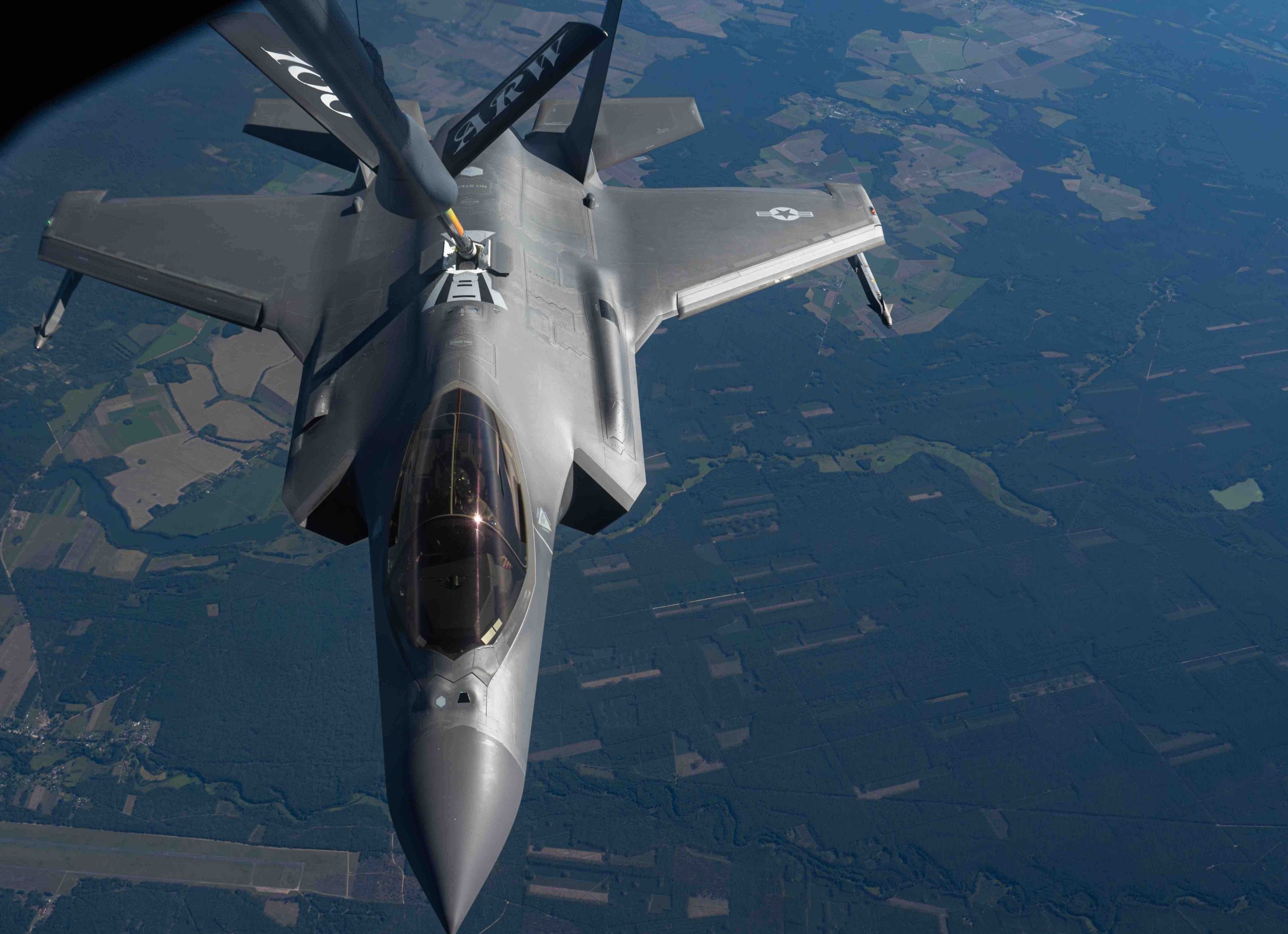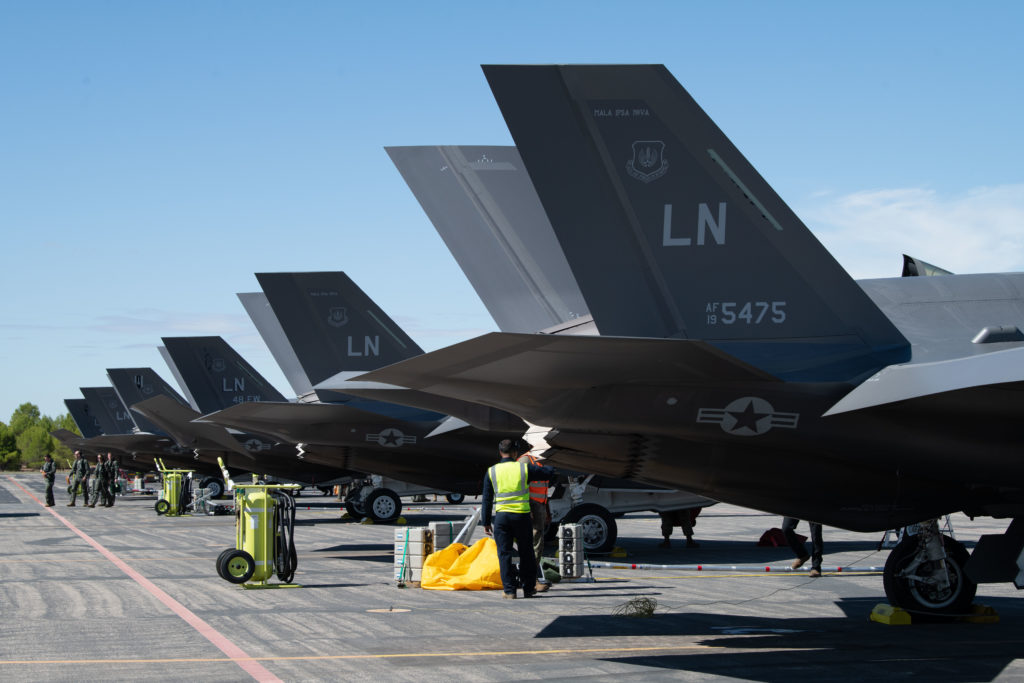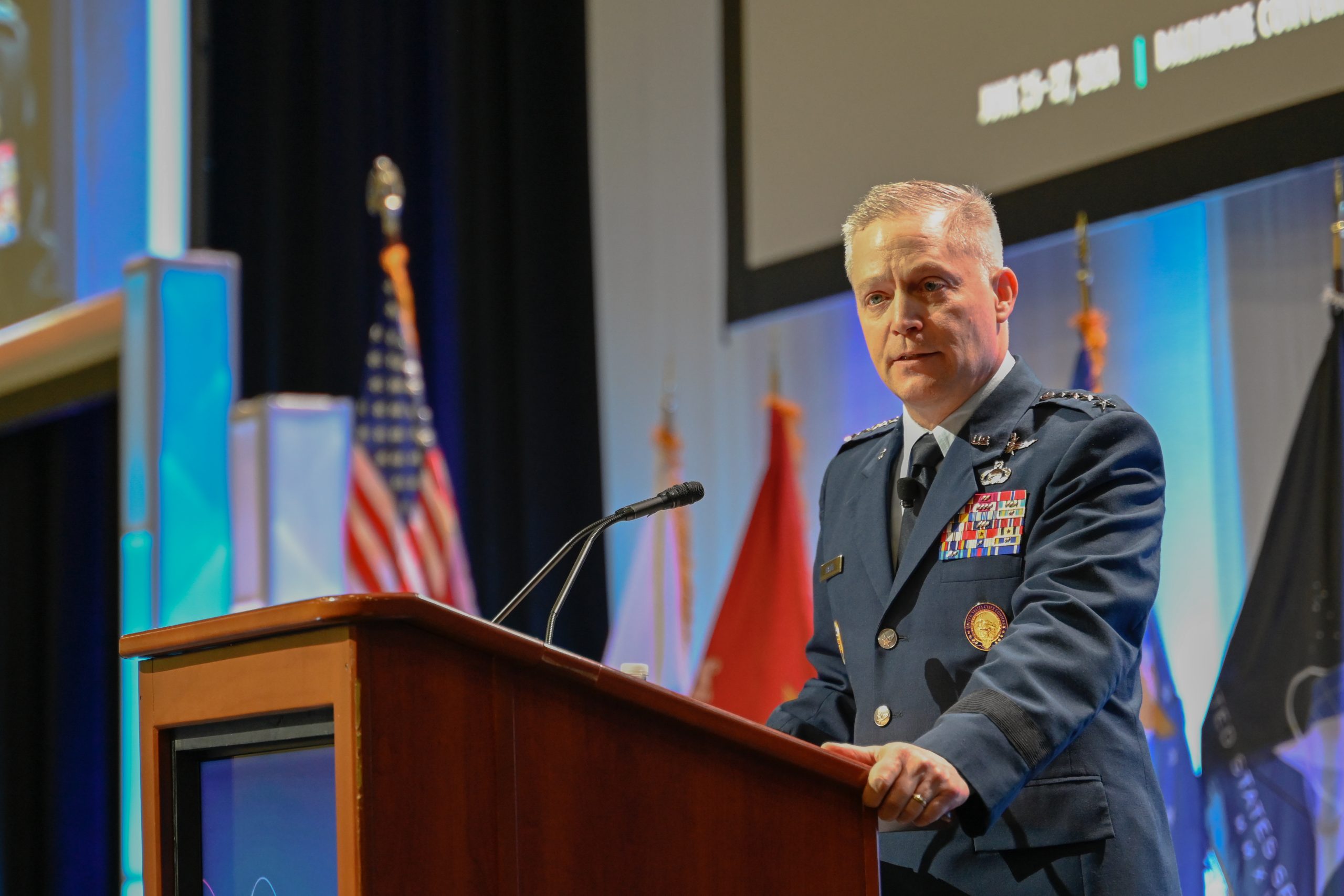COLORADO SPRINGS, Colo.—U.S. Space Command has defined five factors it believes will be key to victory should it ever need to fight a full-fledged war in space, Gen. Stephen N. Whiting said April 8 at the Space Symposium.
The factors, which Whiting called “Elements of Victory,” include efforts U.S. military space leaders have emphasized before, from resilience to a first strike to coordination with commercial and allied partners. But Whiting’s focus on how to prepare to win a conflict marks another step in the Pentagon’s shift to treat space as a warfighting domain in its own right.
Space Force leaders have talked about space as a warfighting domain before. Chief of Space Operations Gen. B. Chance Saltzman has made space superiority a calling card of his tenure and formulated a theory of “Competitive Endurance” for how the service will seek to manage competition and deter conflict with the likes of China and Russia.
But while the Space Force organizes, trains, and equips forces, Space Command is responsible for actual operations in the domain and thus has to think about and prepare to fight, Whiting said.
“We are a combatant command, and like all other combatant commands, we must be dominant at warfighting and war-winning,” Whiting said. “And dominant warfighting in space requires credible, acknowledged kinetic and nonkinetic capabilities, fires and weapons. Acknowledging this reinforces a distinct space warfighting ethos, ensures that threats are met with the right capabilities, and restores credible deterrence in space.”
The challenge leaders have faced is that there has never been a war in space, so establishing exactly how to win one is still theoretical. The elements Whiting identified “are informed by lessons learned in other domains, from the best thinking across our Joint Force exercises, and modeling and simulation,” he said.
They include:
- Operating through a first strike
- Transition from crisis to conflict
- Synchronize and integrate joint, commercial, allied, and partner capabilities
- Sustain and bolster space capabilities beyond initial stages of conflict
- Achieve space superiority
For each element, Whiting highlighted SPACECOM’s efforts to build up its capabilities. Dating back to 2024, the command established strategies for experimentation and artificial intelligence, expanded its Commercial Integration Cell and Joint Commercial Office, and worked to field better command-and-control systems.
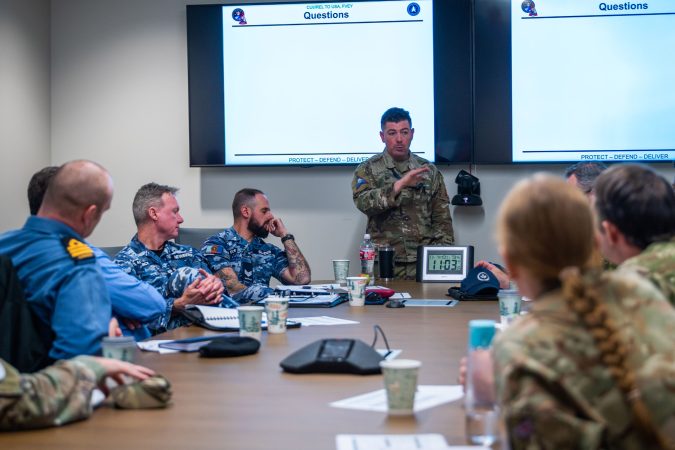
One of the biggest moves SPACECOM has made to bolster its posture for conflict is to “operationalize” its ties with allies, Whiting said—essentially building the relationships to the point where they would work smoothly if a space war breaks out.
Just recently, he revealed, the U.S. and France “conducted our first ever bilateral rendezvous and proximity operation to demonstrate combined capabilities in space in the vicinity of a strategic competitor spacecraft.”
More broadly, SPACECOM expanded Operation Olympic Defender, a coalition of allies who coordinate their space efforts, share data, and work together to defend against threats.
In 2024 and 2025, Germany, France, and New Zealand joined the operation, alongside the U.S., United Kingdom, Canada, and Australia. At the symposium, Whiting said Olympic Defender has reached initial operational capability with its new roster of allies.
“Together, we’ve conceptualized requirements for our multinational force, we’ve developed the first [Olympic Defender concept of operations], we’ve outlined national contributions … and we’ve created a space domain awareness concept of operations,” Whiting said. “And this week, we’ll sign and publish our first ever [Olympic Defender] campaign plan.”
SPACECOM has also written its own campaign plan, and the Space Force made campaigning in orbit one of the central tenets of its “Competitive Endurance” theory. Whiting said such plans are one of the keys to transition from crises to sustained conflict.
Ultimately, Whiting stressed that the final element—space superiority—is both a necessity to winning a conflict and enabled by the other elements.
“The complexity and expanse of space challenges the notion of having superiority at all times and all places. However, space superiority can be achieved at a time and place of our choosing, to close friendly kill chains and disrupt adversary kill webs,” Whiting said.
In that regard, he and Saltzman appear to be singing from the same sheet of music. At last month’s AFA Warfare Symposium, Saltzman said the Space Force will do “whatever it takes” to achieve space superiority, up to and including destroying adversary satellites, a once verboten concept in military space.
At the Space Symposium, Whiting was just as outspoken, going even beyond previous comments he has made calling for “space fires.”
“It’s time that we can clearly say that we need space fires and we need weapon systems,” Whiting said. “We need orbital interceptors. And what do we call these? We call these weapons, and we need them to deter a space conflict and to be successful if we end up in such a fight.”


